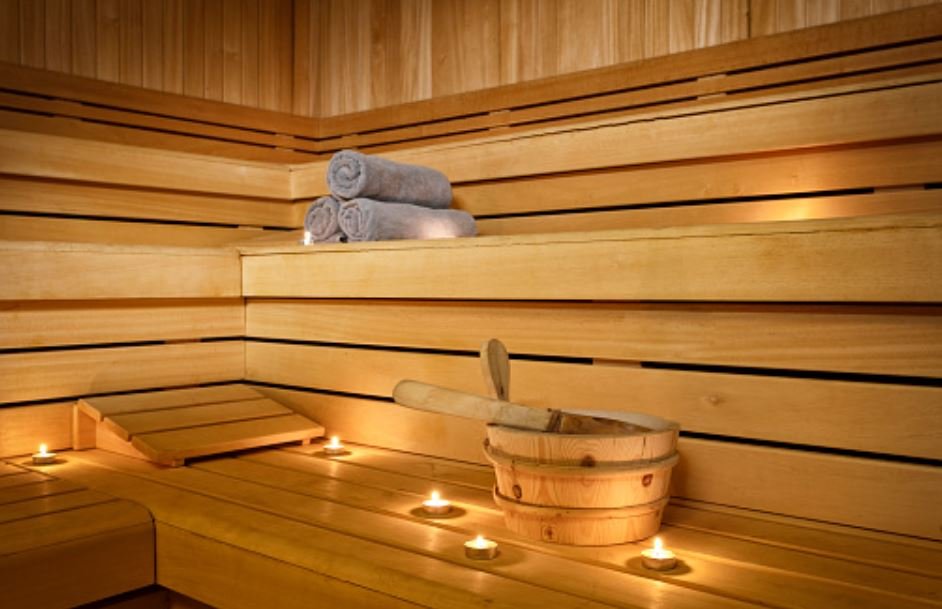
Are you thinking about buying a sauna or steam room for your home or gym? Both steam rooms and saunas are good for your health in many ways, but you can’t use one in place of the other. In this piece, we’ll talk about how steam rooms are different from saunas and how they can be good for your health.
What is a steam room?
A steam room is a room that is warm and uses moist heat to make it humid. Most steam rooms have between 100 and 120% humidity, which is higher than the average humidity in a sauna. Most steam rooms have tiled walls and ceilings so that the wetness doesn’t cause damage.

What is a sauna?
A sauna is also a hot room, but it heats with dry heat instead of wet heat. Most saunas are made of wood and have humidity levels between 5 and 30%. There are different kinds of saunas, like Finnish saunas, infrared saunas, and steam saunas.

| Steam Room | Sauna |
|---|---|
| High humidity (100-120%) | Low humidity (5-30%) |
| Utilizes moist heat | Utilizes dry heat |
| Lower temperature (110-120°F) | Higher temperature (160-200°F) |
| Hydrates and nourishes skin | Promotes sweating and detoxification |
| Alleviates respiratory conditions | Improves blood circulation |
| Improves cardiovascular health | Reduces pain and inflammation |
| Promotes relaxation and reduces stress | Promotes relaxation and reduces stress |
| High risk of dehydration and overheating | Lower risk of dehydration and overheating |
| Not recommended for individuals with certain health conditions | Safe for most individuals with proper precautions |
Heat source
In a steam room, the heat comes from a steam generator, which turns hot water into the air that fills the room. In a sauna, on the other hand, heat is usually made with a gas stove, an electric heater, or infrared lamps.

Humidity
In a steam room, there is a lot more dampness than in a sauna. The high amount of humidity in steam rooms helps to open the skin’s pores and make the skin more hydrated. In saunas, on the other hand, the low humidity helps create a dry heat that makes you sweat and cleanse your body.

Temperature
Most steam rooms are between 110°F and 120°F, which is lower than most baths. Saunas, on the other hand, tend to have a higher temperature range, between 160°F and 200°F. But the high amount of humidity in a steam room can make it feel hotter than it really is.

Health benefits of steam rooms
Steam rooms offer numerous health benefits, particularly for the skin, respiratory system, cardiovascular system, and mental health.
Skin health benefits of steam rooms
The high humidity in steam rooms can help to keep the skin hydrated and healthy. Steam rooms can help clear out your pores, get rid of dead skin cells, and make your skin feel and look better. Steam rooms can also help people with acne, eczema, and psoriasis feel better.
Respiratory health benefits of steam rooms
Steam rooms can help to alleviate respiratory conditions such as asthma, bronchitis, and sinusitis. The moist heat in steam rooms helps to loosen mucus and congestion in the lungs and airways, making it easier to breathe.
Cardiovascular health benefits of steam rooms
The heat and humidity in steam rooms can help improve heart health by improving blood flow, lowering blood pressure, and lowering the risk of heart disease. Pain and swelling in the joints and muscles can also be eased in a steam room.
Mental health benefits of steam rooms
Steam rooms can help you calm down and feel less stressed. The warm and muggy air can be soothing to the body and mind, making it easier to feel calm and at ease. Steam rooms can also help people sleep better by making them feel less stressed and more relaxed.
Health risks of steam rooms
Even though steam rooms are good for your health in many ways, they also pose some health risks. High humidity and temperature in steam rooms can cause you to lose water and sweat, which can make you feel dizzy, lightheaded, or even pass out. Before using a steam room, people with health problems like high blood pressure, heart disease, or breathing problems should talk to their doctor.

Conclusion
Steam rooms and saunas are both common ways to use heat treatment, and each has its own health benefits. Even though steam rooms are less hot and have more humidity than saunas, they are good for your skin, lung, cardiovascular, and mental health in many ways. But it’s important to use steam rooms safely and talk to a doctor before doing so, especially if you already have a health problem.
FAQs
-
Are steam rooms or saunas better for weight loss?
Both steam rooms and saunas can help with weight loss by promoting sweating and detoxification. However, they should not be used as a primary method of weight loss and should be used in combination with a healthy diet and exercise.
-
How often should I use a steam room?
It is recommended to use a steam room for no more than 20 minutes at a time and to take breaks in between sessions. The frequency of use can vary depending on individual health and preferences.
-
Can steam rooms help with sinus congestion?
Yes, steam rooms can help to alleviate sinus congestion by loosening mucus and congestion in the airways.
-
Can steam rooms help with muscle soreness?
Yes, steam rooms can help to alleviate muscle soreness and promote relaxation.
-
Are steam rooms safe for pregnant women?
Pregnant women should consult with their doctor before using a steam room, as the high humidity and temperature levels can be harmful to both the mother and the fetus.
Based on: wellhealthorganic.com:difference-between-steam-room-and-sauna-health-benefits-of-steam-room







